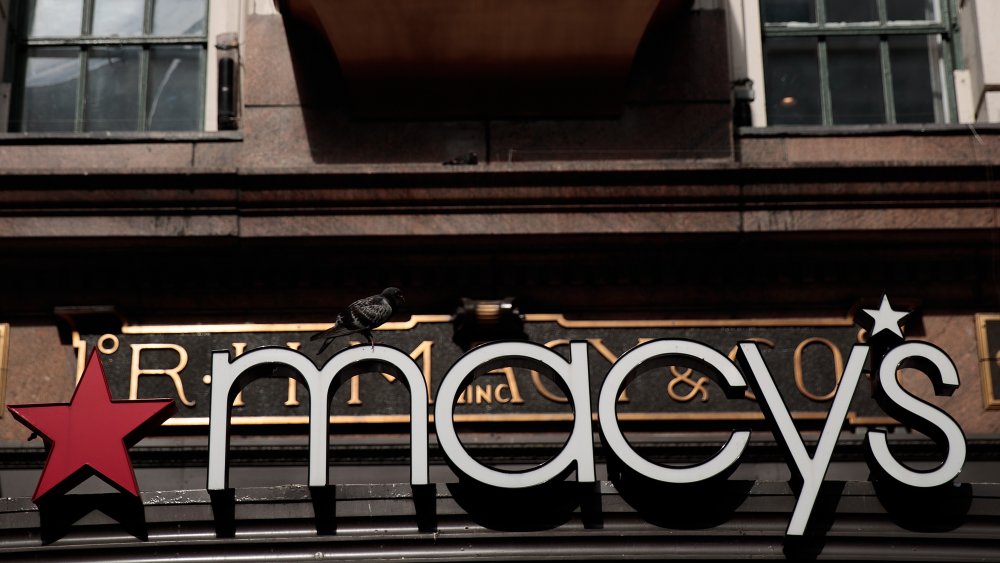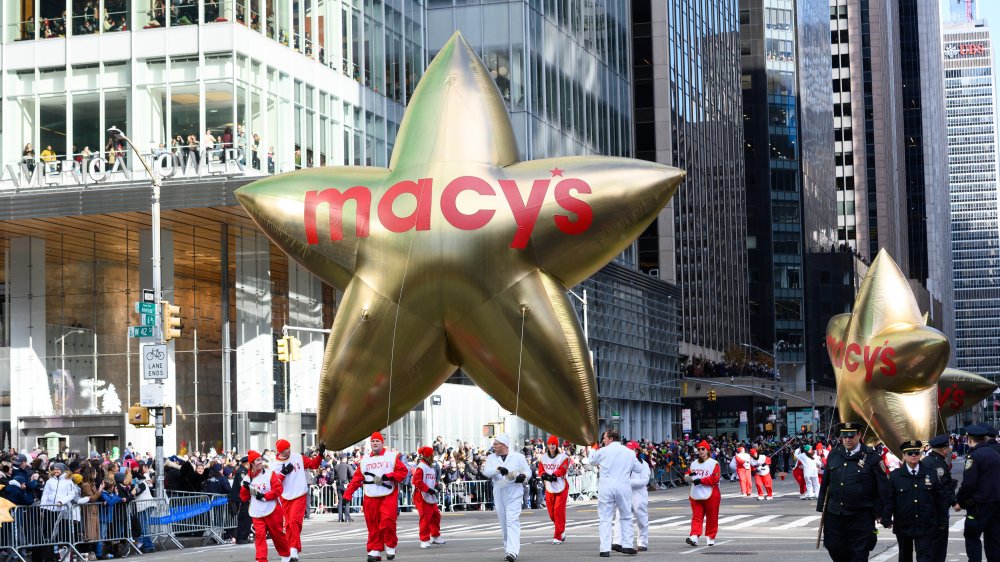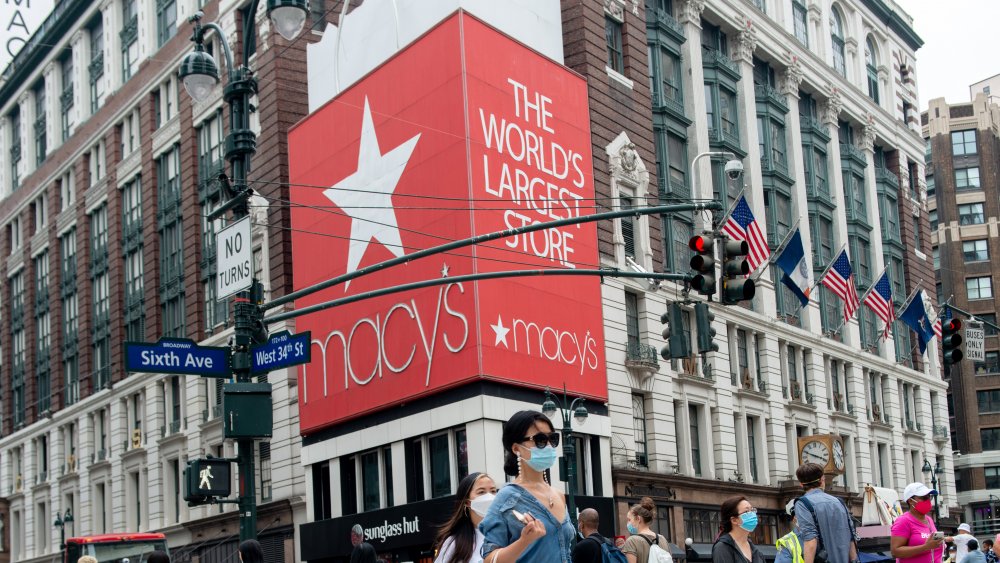The Untold Truth About Macy's
It's safe to say, no department store has a logo as instantly recognizable as Macy's. Even if you're not a department store enthusiast, you know the red star logo on the shopping bags and storefront is the same star on the Thanksgiving Parade balloons. Maybe you remember back-to-school shopping with your parents at Macy's, or browsing prom dresses. Or maybe Miracle on 34th Street is a staple in your holiday routine.
After 161 years in business, the retail giant Macy's has weathered many storms and rode the waves of change. At its founding, Macy's looked way different than the store we know today. Instead of make-up counters, there were...dry goods. There was no Thanksgiving Day Parade, and definitely no prom dresses. And now, as shopping moves online, you may no longer be able to find a Macy's at your local mall (via Business Insider). The future may be uncertain but there is no doubt the retail giant has already cemented a large, department store sized space in history.
The red Macy's star came from a tattoo
Originally a small, dry goods store, Macy's was founded in 1851 in New York City. The founder, Rowland Hussey Macy, started his career as a crewman on a whaling ship. The origin of the red star arrived during this time of his life. Macy's spokesman Orlando Veras, told Boston, "He certainly did have a red star tattoo on his arm, which became the inspiration later on for the current version of Macy's."
Rowland was known for his inventiveness. Macy's was one of the first stores at the time to have the same price for an item, for everyone. Bargaining may be fun now and then, but set prices, written in bold, will always be on trend. Veras explains, "The one price policy can be attributed to the fact that he grew up Quaker on Nantucket and felt that there should be one price because there's only one standard truth." A wider selection and new items became synonymous to the brand. Macy's is responsible for introducing new products to the public like colored bath towels and teabags (via Luxury Launches).
Macy's created its own holiday traditions
Macy's continued to practice smart branding. Early on, the brand glued itself onto two of America's favorite holidays, Thanksgiving and Christmas (via History.com). They weren't the first department store to hold a holiday parade; that honor belonged to the Philadelphia-based Gimbel Brothers Department Store. Over time, Macy's annual Thanksgiving day parade has become an encompassing holiday tradition.
Former Creative Director of the parade, Wesley Whatly, tells 6sqft, "What I think is so special about the Macy's Parade is it's one day a year when New York City kind of feels like a small town. Where everyone just hangs out of their windows 40 stories in the air, or they pour out onto the street. And everyone is just like a child again. I think we all kind of get to remember those parade moments and memories from our childhood."
Conjuring up childhood memories while putting on a spectacular show, and topped with red stars being seen all over America's televisions in what's basically advertising on steroids. Although it happens on Thanksgiving day, it was originally dubbed the "Christmas Parade." And as always, from the first parade to the last, Santa brings up the rear.
Planning the Thanksgiving Parade is a huge job
It may seem like the giant floats steal the show, but the parade wouldn't be as fabulous or memorable without the high school marching bands. From 6sqft, Wesley shares a little insider knowledge by saying, "The creative planning for each parade starts about 18 months in advance. It begins with the selection of marching bands that are going to participate...Believe it or not, I fly across the country and I surprise the kids with the news that they have been selected to perform in New York City. This is the best three weeks of my year. I can't tell you how much fun that experience is."
So, can the red star and holiday cheer blaze on? Fast forward almost a hundred years later, and we see a brand that remains a fixture in the retail industry but is having trouble moving forward in waters as turbulent as Rowland Macy's fishing days. Via CNBC, current CEO of Macy's, Jeff Gennette, is confident. He states, "Macy's will survive. It has a role to play in American retail."



